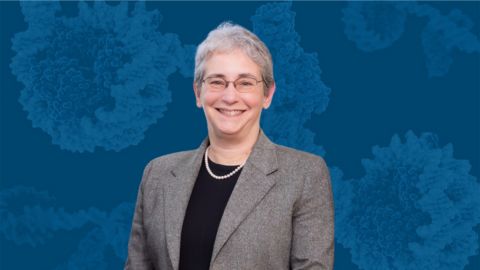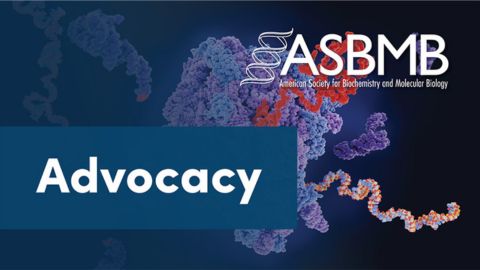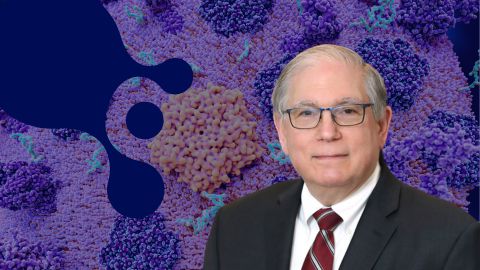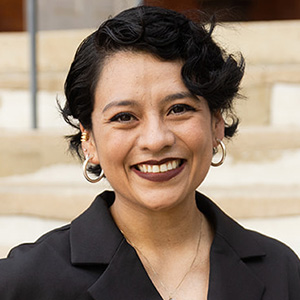NPA task force releases report on postdoc policies
The National Postdoctoral Association task force recently released its revised 2024 report with recommended policies and practices for postdoc office leadership, in academia and industry.
The report is designed as a third-party reference to improve the professional and personal lives of postdocs. The NPA said it revised recommendations in its 2014 report as public discussions about roles, benefits and compensation have become more frequent and pointed over the last decade.
Members of the scientific community have discussed reform of the postdoctoral training model for years, with the same persistent concerns about long training periods, low salaries and lack of appropriate guidance for careers other than in the professoriate. Faculty members struggle to recruit and hire postdocs.
Jeffrey Brodsky is a professor at the University of Pittsburgh and a member of the American Society for Biochemistry and Molecular Biology’s Public Affairs Advisory Committee. Brodsky is also one of three primary investigators on a National Institutes of Health T32 training grant focused on graduate training paths to promote traditional and nontraditional professional outcomes.
“With postdoc numbers falling in the U.S., especially amongst citizens and permanent residents, it is vital that faculty and funding agencies better adapt to the needs of the current postdoc population,” Brodsky said.
Alongside the report, NPA has launched the pilot recognition program to showcase institutions that have adopted the recommended policies and the impact that has on their postdocs’ well-being, work culture and professional development opportunities.
The task force developed eight primary focus areas:
- Defining a postdoc
- Compensation
- Benefits
- Mentorship
- Professional development
- Well-being
- Diversity, equity, inclusion and belonging
- International issues
In addition to the eight postdoctoral priorities, the task force also developed seven administrative recommendations that can be accomplished through internal institutional actions that are procedural and require low-level engagement with postdocs.
Defining a postdoc
The report highlights the importance of a common title and definition for postdoctoral researchers within institutions. The NPA has defined postdocs as individuals in a temporary mentored position following the achievement of a terminal degree for the purpose of gaining specialized skills before pursuing their career path.
The NPA’s executive director and CEO Tom Kimbis said, “It is a long-standing issue that postdocs are often referred to as students. They have completed their educational training and received a terminal degree. But the word ‘trainee’ has led to confusion in the past and is not representative of the degree held by postdocs. Hopefully, this additional clarity is of assistance to the community, including mentors and supervisors.”
The NPA also recommended institutions establish a five-year maximum time frame for an individual to be considered a postdoc, including all prior postdoc positions. The report states that extensions should be made available in appropriate cases, and institutions should explain the procedures for submitting an extension.
The National Institutes of Health’s working group released the re-envisioning NIH-supported postdoc training report in December 2022. Within the report, the working group also recommended a five-year time limit for postdoc training. (Read about the report here).
Compensation and benefits
Postdoc positions have varying salary ranges, employee-level benefits and support that depend on discipline, funding mechanisms and nationality.
The NPA’s Advocacy Committee Vice Chair Azmi Ahmad, a postdoc at the Yale School of Medicine, noted that the report emphasizes a uniform definition within each institution. “Standardizing the postdoc definition ensures equitable treatment for all postdocs.” he said.
The task force recommended institutions establish a minimum baseline compensation based on the General Schedule pay scale, with locality adjustments where applicable, to fairly compensate postdocs based on their education level and skills. The GS-11 level is the equivalent starting level for Ph.D. holders in federal hiring.
The task force also recommended institutions provide comprehensive and equitable benefits packages to all postdocs and their families. Institutions are encouraged to provide clear policies on vacation, sick days, disability and medical leave, and information on family leave benefits.
The NIH working group report also recommended a minimum salary increase of $70,000 for NIH-supported postdoc stipends in 2024, up from $56,484 in 2023. The NIH announced on April 23 an 8% pay increase, with pay levels beginning at $61,008 for fiscal year 2024 to attract and retain postdocs. The announcement states the NIH also plans to “further increase stipend funding levels over the next three to five years to reach the advisory group’s recommendations.”
Mentorship and professional development
A critical element in postdocs’ training is mentorship, yet their work environments sometimes offer inconsistent mentorship. According to the NPA’s Postdoctoral Barriers to Success Report, out of 366 postdocs surveyed across the United States, 80.9% were negatively impacted by the lack of transparency and expectations of the principal investigator.
The task force recommended institutions require the mentor and mentee to develop written agreements outlining expectations and responsibilities of both parties, the use of individual development plans with an annual review and mandatory mentor training programs. To incentivize faculty, institutions are encouraged to establish and enforce policies for mentorship in annual reviews and the tenure process.
As research has evolved, so have career outcomes for postdocs, which now expand into industry, government, nonprofits and entrepreneurship. In the NPA’s Postdoctoral Barriers to Success Report, 90.4% of those surveyed were negatively impacted by a lack of clarity about the path to their next position.
“We need to offer opportunities for postdocs to teach and perhaps engage in outreach and science policy,” Brodsky said. “Many large institutions and departments, mine included, provide these opportunities. However, I fear that the postdocs would need to do this outside of their work hours, since the current postdoc contracts require 100% effort on research.”
The task force recommended institutions establish a policy for postdocs to receive a minimum of 10% of protected time to pursue professional development activities and include this language in the postdocs offer letter.
Well-being
Mental health and wellness are an important issue within the postdoc community. In the NPA’s Postdoctoral Barriers to Success Report, 70.8% of the surveyed postdocs were negatively impacted by a lack of healthy workplace culture.
Another survey of 200 postdoc fellows reported 13% flourishing, 58% languishing and 29% depressed because of a stressful training environment. The authors concluded that increasing an individual’s use of adaptive coping strategies and positive emotions would help combat clinical levels of anxiety and depression.
The task force recommended institutions implement policies prioritizing workplace safety that align with the U.S. Surgeon General’s Framework for Mental Health & Well-being in the Workplace. The report also recommended that institutions appoint a leader for well-being initiatives and provide adequate access to behavioral health support and counseling, training and resources to recognize distress and burnout, and resources for marginalized populations with additional needs.
Diversity, equity, inclusion and belonging
In the NPA’s Postdoctoral Barriers to Success Report, 66.7% of postdocs surveyed were negatively impacted by the lack of institutional diversity, equity, inclusion and belonging efforts. DEIB issues have gained importance in institutions, yet more work is required. Of 41 institutions that responded to NPA’s DEIB survey, only 10% had activities aimed at postdocs compared to 37% with activities geared toward an assortment of institutional members.
The task force recommended institutions develop language and policies to promote inclusion in a legal manner and DEIB actions for the postdoc community, state the institution’s position and intent to advance DEIB and create formal recruitment mechanisms to diversify the postdoc community.
International issues
As of 2019, 56% of postdoctoral researchers in the U.S. were foreign-born. In NPA’s Postdoctoral Barriers to Success Report, 92.1% of the international scholars surveyed said they were negatively impacted by additional vulnerabilities due to their status.
U.S. domestic talent does not fulfill the needs of the science, technology, engineering and mathematics workforce, which is essential for continued U.S. leadership in discovery and innovation. NAFSA: Association of International Educators, in its 2020 Losing Talent Report, noted that 87% of international scholars indicated the visa application process or visa delays or denials were the top reason for the decline in enrollment in the U.S. in the fall of 2019.
The task force recommended institutions provide resources, platforms and opportunities for international postdocs to advocate for their needs. The NPA onboarding international postdocs guide is an existing foundational tool.
Finally, the task force recommended that institutions should offer contracts to international scholars lasting the entire duration of their projects, instead of the annual contracts that require yearly visa renewal, which is costly and stressful for the scholar.
“Taking the local postdoc voices and needs into account is the most critical step in my opinion,” Ahmad said. “Centering the postdoc voice in the process of implementing these changes will have the greatest benefit for the community. A great way to do this is to include postdocs, or postdoctoral association leaders if available, in the decision-making process.”
Related links
The National Postdoctoral Association task force developed eight recommendations for institutions on postdoc priorities. Learn more from these source materials:
Enjoy reading ASBMB Today?
Become a member to receive the print edition four times a year and the digital edition monthly.
Learn moreFeatured jobs
from the ASBMB career center
Get the latest from ASBMB Today
Enter your email address, and we’ll send you a weekly email with recent articles, interviews and more.
Latest in Policy
Policy highlights or most popular articles

Hope for a cure hangs on research
Amid drastic proposed cuts to biomedical research, rare disease families like Hailey Adkisson’s fight for survival and hope. Without funding, science can’t “catch up” to help the patients who need it most.

Supporting science through advocacy and community building
ASBMB calls on scientists to take action as funding cuts and policy shifts threaten the U.S. research enterprise, emphasizing the power of community advocacy and persistence in protecting the future of science.

Seven steps to advocating in your home state
Find out how to schedule, prepare for and conduct a productive district office meeting to communicate the importance of fundamental scientific research funding to your representatives.

ASBMB members call for funding and agency support amidst uncertainty
In 60 meetings on Capitol Hill, scientists urge legislators to reaffirm support for scientific innovation

Embrace your neurodivergence and flourish in college
This guide offers practical advice on setting yourself up for success — learn how to leverage campus resources, work with professors and embrace your strengths.

ASBMB honors Lawrence Tabak with public service award
He will deliver prerecorded remarks at the 2025 ASBMB Annual Meeting in Chicago.

